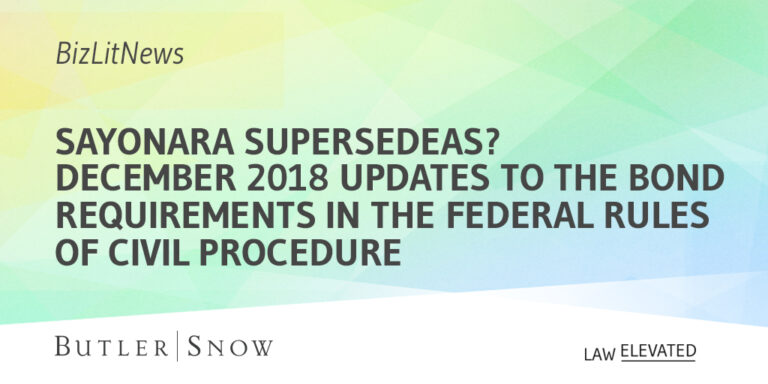If an adverse final judgment is rendered against your client, you likely will want to research the mechanics of posting a bond in order to prevent execution on the judgment while you appeal it. The Federal Rules of Civil Procedure have traditionally required the posting of a “supersedeas bond” in order to stay a judgment. As described by the U.S. Court of Appeals for the Fifth Circuit, “[t]he purpose of a supersedeas bond is to preserve the status quo while protecting the non-appealing party’s rights pending appeal.” Poplar Grove Planting & Ref. Co. v. Bache Halsey Stuart, Inc., 600 F.2d 1189, 1190–91 (5th Cir. 1979). In other words, the bond provides dual protection: “A judgment debtor who wishes to appeal may use the bond to avoid the risk of satisfying the judgment only to find that restitution is impossible after reversal on appeal. At the same time, the bond secures the prevailing party against any loss sustained as a result of being forced to forgo execution on a judgment during the course of an ineffectual appeal.” Id.
New amendments to the Rules, effective December 2018, have eliminated reference to a supersedeas bond. But does that mean the practice is ancient history? No. Rule 62(b) still provides that a party appealing a judgment may stay execution of that judgment by “providing a bond or other security.” Fed. R. Civ. P. 62(b). This amended rule, which provides “other security” as an alternative to providing a bond, seems to align with existing Fifth Circuit precedent. See Poplar Grove, 600 F.2d at 1191 (A court may choose “to depart from the usual requirement of a full security supersedeas bond to suspend the operation of an unconditional money judgment” if the moving party “objectively demonstrate[s] the reasons for such a departure.”).
Another change to Rule 62 is that the temporary automatic stay on execution that goes into effect when a judgment is entered is now 30 days, which aligns with the time to seek an appeal of most civil judgments). Fed. R. Civ. P. 62(a). This amendment is good news for clients considering an appeal, as the prior version of the rule set the automatic stay period at only 14 days. Under the prior version, there was a window of time in which the client might have to post a bond to stay the enforcement of a monetary judgment, even before it had decided to pursue an appeal. The 2018 amendments eliminate that gap period for most civil appeals.
Authored by: Caroline B. Smith
